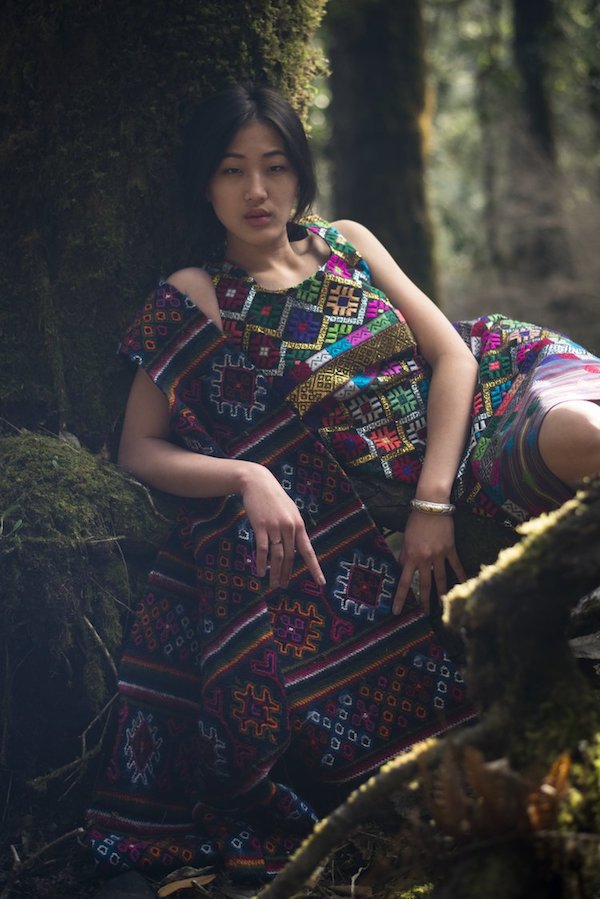Kira
This is a collection of articles archived for the excellence of their content. |
Contribution to Bhutanese fashion
Mohua Das, How Bhutan's kira became couture, September 27, 2017: The Times of India
The kingdom's nascent fashion industry is abuzz with young, often self-taught designers, armed with a rich textile heritage and lots of ideas
If there's one `what Kate wore' moment that stood out during the royal couple's Bhutan tour last year, it was when the Duchess of Cambridge tried her hand at archery in a half-kira -the traditional yarn of woven fabric that Bhutanese women drape around their body offering a rare glimpse into the country's rich textile heritage.
Fashion trends come and go but the Bhutanese dressing style has continued over generations. In 1989, it was enforced as a strict dress code -men were required to wear the gho, a knee-length kimono-like robe tied at the waist, and women the kira, paired with a short jacket (tego), with violators subject to heavy fines. But ever since the dress code was relaxed five years ago, the remote Himalayan kingdom has turned into a hotbed of fashion with several independent labels emerging. This was a key theme at last week's Mountain Echoes litfest in Thimpu, which spotlighted frontrunners who curated collections combining their textile legacy with modern designs. In Bhutan, `thagzo' or the art of weaving is one of the 13 traditional arts and crafts that developed over the centuries and survive to this day . In 2013, the Royal Textile Academy under the patronage of the Queen Mother introduced a national design competition with hefty prize money to encourage young designers to innovate with the living art. “It was exciting for the youth to be part of a fashion show for the first time. It led to designers innovating and weavers competing on better textiles,“ says Chimmi Choden, a self-taught designer whose designs have sashayed down the ramps at Manhattan, California, Malaysia and India. She opened her House of Design in 2014 as a socially conscious brand offering employment to local craftsmen.
Another designer on Bhutan's emerging fashion block is Chandrika Tamang, who had made her first garment without using a scale or instruments, from a piece of fabric embellished with a bow yanked off her sister's shoe.With the internet as her first guru, Chandrika quit her banking job and studied at National Institute of Design in Ahmedabad before launching CDK, her eco-friendly line committed to curbing the carbon footprint last year.“My current collection is inspired by our prayer flags and the colour of each garment has its own significance,“ says Chandrika.
The cities are full of young designers exchanging trends, which has led to a more diverse mix of conventional and high fashion on Bhutan's streets today . Besides raw talent, what is helping Bhutanese designers steal attention is the “slow approach“, a revolutionary process in the current fashion scene but intrinsic to Bhutan's textile tradition. The delicate piece of cloth teeming with threadwork takes a pair of ingenious hands and two months to a year to make. Almost every household has a loom and most weavers are women.
The designers are moving ahead on their own steam, be it from a niche studio or a shack in the craft bazaar. Aimed at wearable couture, the collections are rooted in the Bhutanese tradition -an abundance of colours and Buddhist and other indigenous motifs -sunrays, mountains, pigeon eye, butterfly , Dorje gong and the eternal knot. Many trends have also trickled down from the royal family's lookbook. Despite the urge to experiment, their ancient weft and warp techniques refuse to go out of fashion. “The silhouettes are still the same but the colour patterns and fabric are changing. Interestingly , the full-length kira fastened by a belt at the waist and a brooch at the shoulder that had been replaced by half and readymade versions is making a comeback. They also have pockets,“ smiles Chimmi.
But infrastructure remains a bottleneck.“To take things forward we need more skilled people for which are required institutes and fashion weeks to engage aspiring designers,“ says Chandrika.
